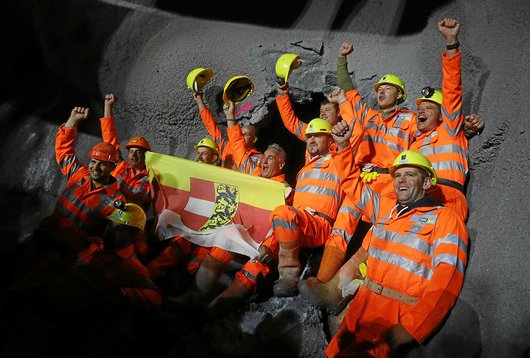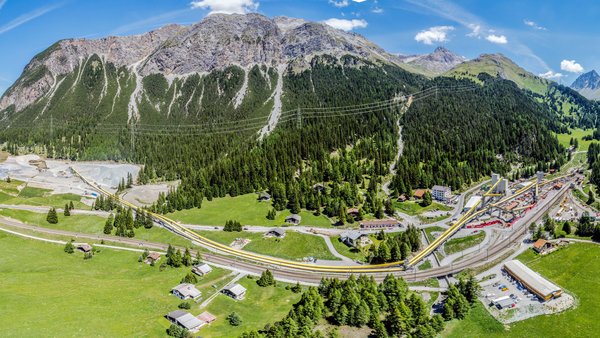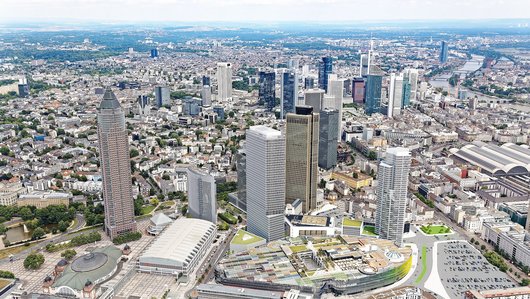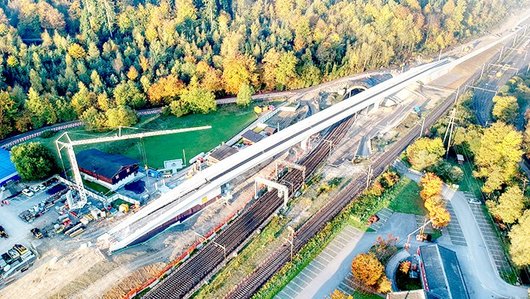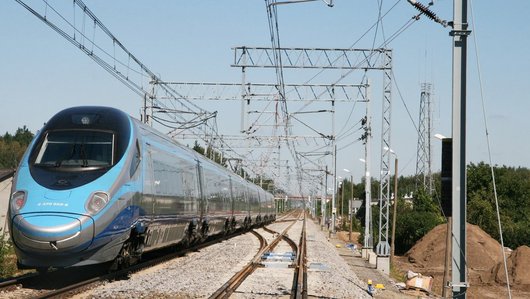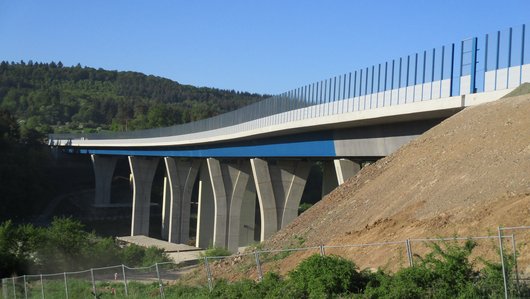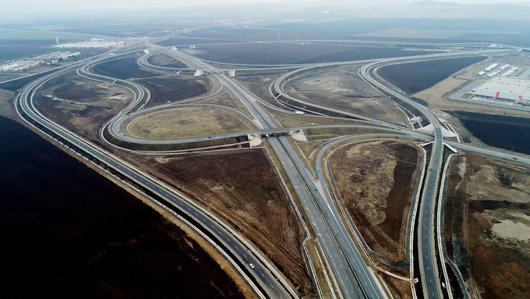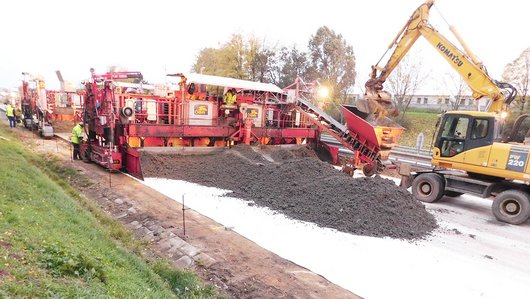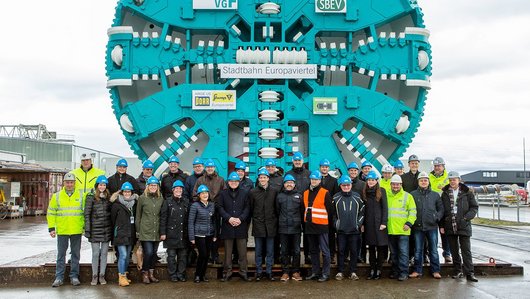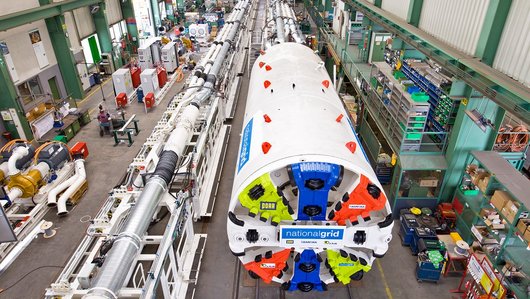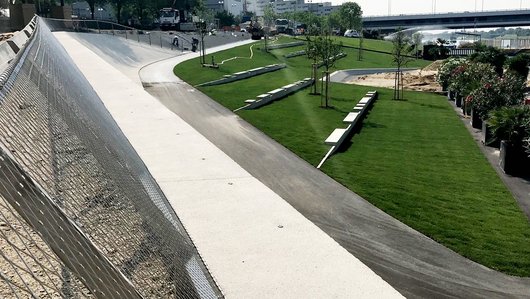
high mountain tunnel
New construction of the
Albula Tunnel II
In the Swiss canton of Graubünden, PORR is working on one of the highest underground Alpine passes: the Albula tunnel, 6km long and 1,800m above sea level.
Its exposed construction site and the technical conditions been stretching the PORR tunnelling team to their utmost for the last three years. The diverse geological formations in particular had a few surprises up their sleeve.
-
EmployerRhätische Bahn AG
-
ContractorARGE Neubau Albulatunnel II: PORR SUISSE AG, Walo Bertschinger AG, Società Italiana per Condotte d'Acqua S.p.A.
-
Project typeCivil engineering/infrastructure, Tunnelling
-
Project scopeNew construction of the approx. 6km-long Albula Tunnel II
-
Order volumeCHF 125 million approx. (EUR 110 approx.)
-
Construction start2015
-
Construction end2020
Background
The railway line from Thusis to St. Moritz is 62km long; its 42 tunnels and 144 bridges span altitude changes of over 1,000m in total. The Albula Tunnel, first operated in 1903 and awarded UNESCO cultural heritage status in 2008, forms the centrepiece of the route. However, at over 110 years old, the tunnel is exhibiting significant technical defects. In 2006, rather than carry out extensive renovations on the old tunnel, the Rhätische Bahn opted to build a new tunnel – the cost difference would be minimal and less disruption to the ongoing rail operation would be caused; furthermore, with the new build, it
would be easier to address modern safety requirements.
The contract to build the new tunnel was awarded in the winter of 2014/2015 to a consortium led by PORR SUISSE AG and also consisting of Walo Bertschinger AG (Switzerland) and Società Italiana per Condotte d’Acqua S.p.A. The order volume is around CHF 125 million (EUR 110 million approx.) Handover of the tunnel was originally scheduled for August 2019. However, due to the geological conditions encountered, the tunnel boring work took about a year longer than anticipated.
For the most technically demanding part, we divided the construction site into different zones.
Comprehensive preliminary work
Before actually beginning work on the tunnel boring, extensive preliminary work was necessary. The consortium set to work on the two installation sites in Preda and Spinas, constructing office blocks, temporary accommodation for 65 people, watercourse protection facilities to purify the waste water from the tunnel, two concrete plants, workshops for equipment repairs, and
a gravel plant for processing the excavated material. The construction site is closed between December and March and can only be reached by train, as the pass road between Bergün and Preda is closed and used as a toboggan run. The contract specifies that all bulk goods must be transported to the site by railway.
Tunnel boring
Boring took place via two approaches: from the north (Preda) and the South (Spinas). The narrow cross section in the single-track tunnel – a mere 35m² – entailed a carefully designed equipment plan. Still, at first glance the actual tunnel boring seemed almost negligible compared to the enormous logistical and technical challenges of preparing the equipment and setting up the construction site. In fact, however, the diverse geological formations were harbouring a few surprises for all the project participants.
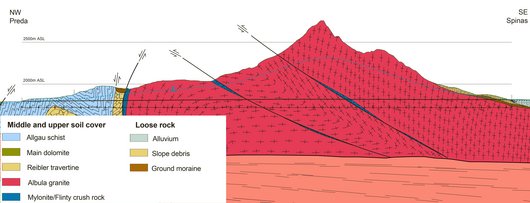

Excavation work from Preda started off in loose stone for the first 37m, protected by four pipe screens. Due to large numbers of storms and low stone stability, this area had to be excavated with a tunnel excavator. After this, a section of Allgäu schist followed, where it was possible to switch to drilling and blasting. However, the dark fine slate proved to be very loose, with a strong tendency to form silt when subjected to mechanical load and water. Water ingress volumes of 45l/s gave the watercourse protection facilities their first serious test. Over successive stages, it was necessary to make up to 50 injections into the open face, at intervals of 15m, to stabilise this area.
The most challenging area from a construction point of view was the Raibler formation. The Raibler travertine geology consists of porous dolomites with hollow cavities. This matrix contains foreign components containing schist, limestone and granite, along with silt containing gypsum. When the first Albula Tunnel was being constructed, a flood of silt forced the construction company into bankruptcy, and the construction site lay abandoned for a year.
This time around, the section was divided into three zones, with the unfavourable third section being protected by a frozen foundation. A chamber was used as the start point for creation of the freezing zone and the reverse-drive in this section, while the first two zones were excavated using a conventional excavator. This section also required sophisticated safety measures – working face anchors, injections, skewers and shotcrete – and, as a result, the average advance was reduced to a mere 95cm per day. In the light of the investigatory results and repeated changes to the execution planning, the client agreed a payment plan for the excavation work that would not be tied to the performance. The greater length of the tunnel blasting was carried out in Albula granite. The high degree of wear on the drilling tools and sharp rock separations kept the teams fully occupied.
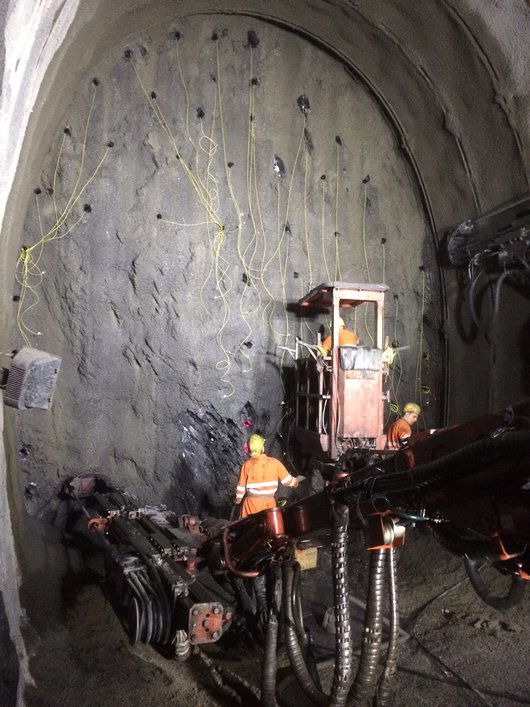

Both pipe screens and excavation supports were used for the first metres of advance in Spinas. A rock collapse in the 250m-long loose stone section caused boring to be halted for a month. Around 500m³ of mud and rock made their way into the tunnel from the ridge, and we were fortunate that nobody was injured. Extensive injections of foam and cement were needed before the sections could be stabilised and cut through. A granite blasting process followed in the next section, with each blast being carried out in a blast window agreed in advance with the rail operator. The small distance to the existing pipes meant that the permissible vibrations could not exceed 60mm/s. Despite these restricted conditions, the consortium was able to achieve a performance of 20m per working day. An important milestone was reached on 2 October 2018, when the machine broke through to the Preda advance.
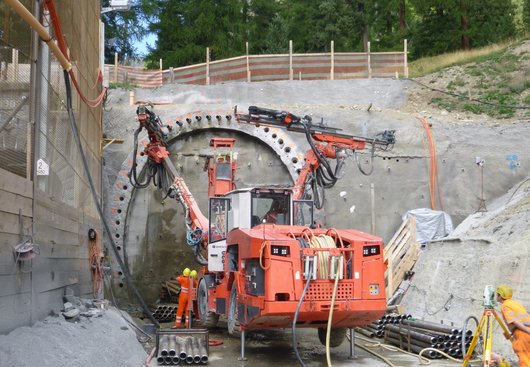

Material processing
Since the tunnel boring was carried out from two sides, the material, having been pre-crushed in the tunnel, had to be transported by rail from Spinas to Preda. Depending on its quality, the stone was either processed for concrete aggregate and rail ballast, or incorporated in the inert substances landfill on site. The gravel plant operated by the consortium is able to process up to 4,000t of excavated material each week. These are then processed by the construction site’s concrete plants, producing shotcrete and structural concrete for the tunnel carcass.
At present, work on the tunnel advance sealing is in progress; this will prevent mountain water from penetrating into the inside of the tunnel. In early 2019, the internal finishing work will begin, and is expected to continue until the end of 2020.
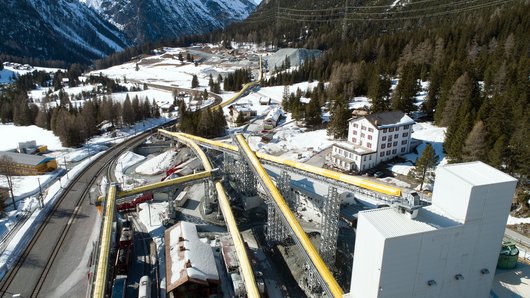

Technical data
-
Height above sea level1.800m approx.
-
Solid excavation volume230.000m³
-
Cross-links12 (3 with vehicle access, 9 pedestrian)
-
Anchors installed22.600 approx.
-
Explosive used800t
Other special features
- Geological conditions: Albula granite, Allgäu schist, travertine, loose rock
- Boring methods: Conventional tunnel boring (excavator, drill and blast)
- Finishes: Inner shell from structural concrete (double-skin area) shotcrete finish (single-skin finish)
- Special features: Tunnel boring during railway operation, annual 2.5-month winter break due to toboggan run on the access road
Successful interim report
Despite often difficult and dangerous conditions, in spring 2018 the construction site was able to celebrate 500 days without any occupational accidents. This was only made possible thanks to the untiring dedication that all our employees bring to their daily work – or perhaps we should say, which forms a foundation for their daily work.
